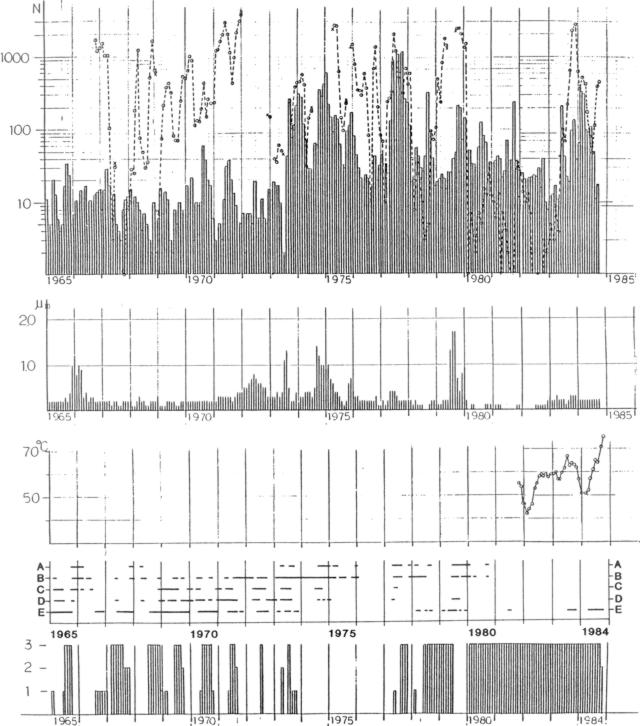Report on Asosan (Japan) — October 1984
Scientific Event Alert Network Bulletin, vol. 9, no. 10 (October 1984)
Managing Editor: Lindsay McClelland.
Asosan (Japan) Block and ash ejection from fumarole
Please cite this report as:
Global Volcanism Program, 1984. Report on Asosan (Japan) (McClelland, L., ed.). Scientific Event Alert Network Bulletin, 9:10. Smithsonian Institution. https://doi.org/10.5479/si.GVP.SEAN198410-282110
Asosan
Japan
32.8849°N, 131.085°E; summit elev. 1592 m
All times are local (unless otherwise noted)
A warning of increased volcanic activity was issued by the [Asosan Weather Station] on 11 October. On the morning of 24 October, ash was ejected from a fumarole that had formed in mid-September on the lowest part of the E inner wall of [Crater 1 of] Naka-dake. A small gray plume rose to 300 m above the fumarole at 0920, but the ejection was too weak to send ash beyond the crater rim. Entry to the area within 1 km of the crater was prohibited shortly before 1000. Another plume rose to 200 m at 1030 the next day, accompanied by intermittent ejection of small blocks, as large as fist size. Activity had subsided by 1550.
The level of water in Crater 1 has gradually decreased since early April (figure 6). A part of the crater bottom could be seen in mid-September. As of 26 October, only 30% of the bottom was covered by the hot water.
Geological Summary. The 24-km-wide Asosan caldera was formed during four major explosive eruptions from 300,000 to 90,000 years ago. These produced voluminous pyroclastic flows that covered much of Kyushu. The last of these, the Aso-4 eruption, produced more than 600 km3 of airfall tephra and pyroclastic-flow deposits. A group of 17 central cones was constructed in the middle of the caldera, one of which, Nakadake, is one of Japan's most active volcanoes. It was the location of Japan's first documented historical eruption in 553 CE. The Nakadake complex has remained active throughout the Holocene. Several other cones have been active during the Holocene, including the Kometsuka scoria cone as recently as about 210 CE. Historical eruptions have largely consisted of basaltic to basaltic andesite ash emission with periodic strombolian and phreatomagmatic activity. The summit crater of Nakadake is accessible by toll road and cable car, and is one of Kyushu's most popular tourist destinations.
Information Contacts: JMA; A. Izumo, Yokohama Science Center; Japan Times; Kyodo News Service.


